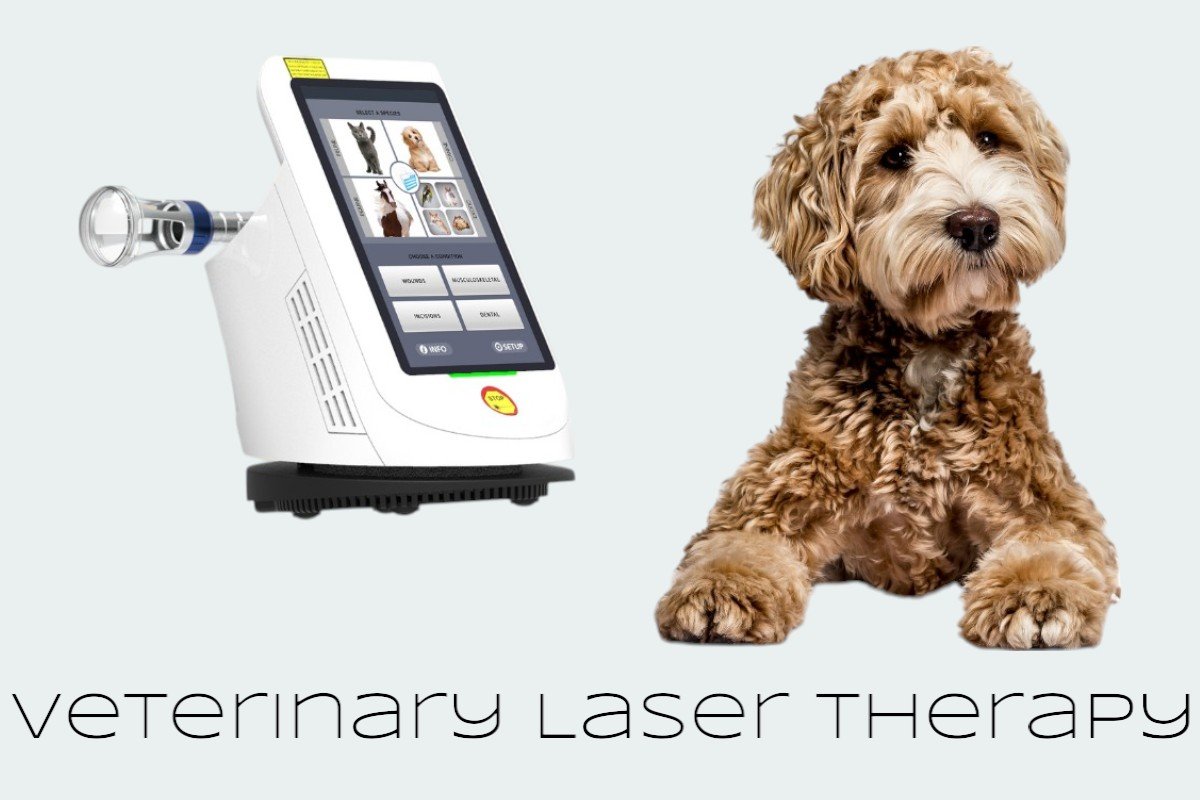
What is Companion Laser Therapy?
Companion laser therapy represents a significant advancement in veterinary medicine, offering a non-invasive, drug-free approach to treating various conditions in animals. This therapeutic modality utilizes specific wavelengths of light to stimulate healing at the cellular level, providing relief from pain and inflammation while accelerating tissue repair processes. As pet owners increasingly seek comprehensive care options for their animal companions, laser therapy has emerged as a valuable tool in the veterinary practitioner’s arsenal.

The growing popularity of laser therapy in veterinary practices reflects a broader trend toward integrative medicine approaches that combine conventional treatments with complementary therapies. This holistic perspective acknowledges the complex interplay between physical symptoms and overall well-being, recognizing that effective treatment often requires addressing multiple aspects of an animal’s health simultaneously.
Scientific Principles and Mechanism of Action
Basic Physics of Laser Therapy
Laser therapy employs light amplification by stimulated emission of radiation (LASER) to generate concentrated beams of light at specific wavelengths. In veterinary applications, these wavelengths typically fall within the red to near-infrared spectrum (600-1000 nm), which allows for optimal tissue penetration without causing thermal damage to surrounding structures. 3
The term “photobiomodulation” describes the cellular and biochemical effects that occur when appropriate light energy is absorbed by photoreceptors within the cells. Unlike surgical lasers that cut or ablate tissue, therapeutic lasers operate at lower power densities specifically designed to modulate cellular function rather than destroy tissue. 1
Cellular Response Mechanisms
When laser light penetrates into tissues, it interacts with chromophores (light-absorbing molecules) within the cells, particularly in the mitochondria. This interaction triggers a cascade of biochemical events that enhance cellular metabolism and function. Key cellular responses include:
- Increased production of adenosine triphosphate (ATP), the primary energy carrier in cells
- Enhanced cell membrane permeability, facilitating nutrient intake and waste elimination
- Stimulation of cytokine and growth factor production
- Increased blood flow and formation of new capillaries (angiogenesis)
- Activation of stem cells to promote tissue regeneration
- Modulation of inflammatory pathways and reduction of oxidative stress 3
These cellular changes collectively contribute to accelerated healing, reduced inflammation, and decreased pain perception, making laser therapy an effective treatment for a wide range of conditions affecting companion animals. 1
Types of Therapeutic Lasers
Classification by Power Output
Therapeutic lasers used in veterinary medicine are typically categorized based on their power output:
- Class III Lasers (Low-Level Lasers): These devices operate at power outputs below 500 milliwatts (mW) and are sometimes referred to as “cold lasers” because they produce minimal thermal effects. Class III lasers were among the first therapeutic lasers used in veterinary medicine, though they have largely been supplanted by more powerful options in clinical settings. 2
- Class IV Lasers (High-Power Lasers): Operating at power outputs above 500 mW (typically 1-15 watts in veterinary applications), these lasers can deliver therapeutic doses more quickly and achieve deeper tissue penetration. Most modern veterinary practices utilize Class IV lasers for their efficiency and versatility across a range of conditions.
Wavelength Considerations
The wavelength of laser light determines its depth of penetration and specific therapeutic effects:
- Red light (600-700 nm): Penetrates superficially and is effective for surface wounds, dermatological conditions, and shallow tissue injuries.
- Near-infrared light (700-950 nm): Penetrates deeper tissues, reaching muscles, tendons, joints, and even deeper structures, making it suitable for treating musculoskeletal and neurological conditions.
- Combination wavelengths: Many modern therapeutic laser systems incorporate multiple wavelengths to address different tissue depths and pathologies simultaneously. 3
Clinical Applications in Veterinary Medicine
Pain Management
Laser therapy has demonstrated significant efficacy in managing both acute and chronic pain conditions in companion animals. By reducing inflammation, improving circulation, and releasing endorphins, laser treatments can provide meaningful pain relief for conditions such as:
- Osteoarthritis and degenerative joint disease
- Intervertebral disc disease
- Post-surgical pain
- Soft tissue injuries
- Neuropathic pain conditions 1
For geriatric patients or animals with compromised organ function that cannot tolerate traditional pain medications, laser therapy offers a valuable alternative or complementary approach to pain management. Many veterinarians report that integrating laser therapy into multimodal pain management protocols allows for reduced medication dosages while maintaining or improving pain control. 2
Wound Healing and Tissue Repair
One of the most well-documented applications of laser therapy is accelerating wound healing. The photobiomodulation effects stimulate fibroblast proliferation, collagen synthesis, and epithelialization, resulting in faster closure of wounds and improved cosmetic outcomes. Specific wound-related applications include:
- Surgical incision healing
- Traumatic wounds and lacerations
- Chronic non-healing wounds
- Burns
- Pressure sores
- Skin grafts 4
Studies have shown that properly administered laser therapy can reduce healing time by 30-50% compared to standard care alone, making it particularly valuable for challenging wounds or compromised patients. 3
Musculoskeletal Conditions
Companion laser therapy shows particular promise in treating various musculoskeletal conditions:
- Degenerative joint disease
- Tendon and ligament injuries
- Muscle strains and tears
- Hip dysplasia
- Cruciate ligament injuries (pre- and post-surgical)
- Fracture healing 1
The anti-inflammatory and tissue-regenerative properties of laser therapy make it especially beneficial for chronic conditions like osteoarthritis, where it can improve mobility and quality of life while potentially reducing reliance on pharmaceutical interventions. 2
Neurological Applications
Emerging research suggests that laser therapy may benefit various neurological conditions through neuroprotective effects and enhanced nerve regeneration:
- Intervertebral disc disease
- Peripheral nerve injuries
- Degenerative myelopathy
- Post-operative spinal surgery recovery
- Facial and trigeminal neuralgia 4
While more research is needed in this area, preliminary evidence and clinical observations indicate that laser therapy may help preserve neurological function and promote recovery in certain conditions affecting the nervous system. 3
Treatment Protocols and Administration
Dosage Parameters
Effective laser therapy requires appropriate dosing based on several key parameters:
- Power density: The concentration of power over the treatment area (W/cm²)
- Energy density: The total energy delivered per unit area (J/cm²)
- Treatment time: Duration of laser application
- Treatment frequency: How often treatments are administered (e.g., daily, weekly)
- Total number of treatments: Course of therapy required for optimal outcomes 1
These parameters must be adjusted based on the patient’s size, coat color and thickness, skin pigmentation, condition being treated, and treatment goals. Most modern laser systems provide preset protocols for common conditions, though experienced practitioners may customize treatments based on individual patient response. 2
Treatment Technique
Proper administration technique is crucial for optimal results:
- Contact vs. non-contact delivery: While some protocols call for holding the laser handpiece slightly above the skin surface, direct contact technique often provides better energy transfer and reduced reflection, enhancing therapeutic effects.
- Movement patterns: Slow, methodical movement of the handpiece over the treatment area ensures even energy distribution and prevents overheating of tissues.
- Treatment area coverage: Treating not only the primary site of injury but also surrounding tissues and related structures (such as proximal joints or nerve pathways) often yields better clinical outcomes. 3
Most treatments last between 3-10 minutes per site, with the specific duration determined by the condition being treated, the power of the laser system, and the size of the treatment area. 4
Evidence Base and Clinical Research
Current State of Evidence
While laser therapy has gained widespread acceptance in veterinary practice, the quality and quantity of research evidence varies by application:
- Strong evidence: Wound healing, pain management for osteoarthritis
- Moderate evidence: Post-surgical pain and inflammation, tendon and ligament injuries
- Emerging evidence: Neurological applications, intervertebral disc disease
- Limited evidence: Some dermatological conditions, dental applications 2
It’s important to note that much of the current understanding of therapeutic laser effects comes from human medicine research, laboratory studies, and clinical experience rather than large-scale controlled trials in veterinary patients. This reflects the general challenge of conducting rigorous clinical research in veterinary medicine. 3
Ongoing Research Directions
Current research in veterinary laser therapy is focused on several key areas:
- Optimizing treatment parameters for specific conditions
- Investigating synergistic effects with other therapies
- Exploring novel applications in oncology supportive care
- Developing objective outcome measures to better quantify clinical benefits
- Establishing evidence-based protocols for various species and conditions 1
As research continues to evolve, the scientific understanding of laser therapy mechanisms and applications is likely to become more refined, potentially expanding its utility in veterinary medicine. 4
Safety Considerations and Limitations
Safety Protocols
While therapeutic lasers are generally considered safe when properly used, important safety considerations include:
- Eye protection: Appropriate protective eyewear must be worn by all personnel and should be considered for patients during treatment.
- Contraindications: Laser therapy should be avoided directly over malignancies, areas of active hemorrhage, the eyes, growth plates in young animals, and pregnant uteri.
- Heat sensitivity: Patients should be monitored for signs of discomfort during treatment, particularly when using higher-powered devices.
- Operator training: Proper training is essential to ensure safe and effective treatment delivery. 2
Limitations and Considerations
Despite its benefits, laser therapy has certain limitations:
- Depth of penetration: Even high-powered lasers have limited penetration depth (typically 2-5 cm), which may reduce efficacy for very deep tissues or large patients.
- Treatment course requirements: Multiple treatments are typically required for optimal outcomes, which requires owner commitment and may increase overall treatment costs.
- Variability in response: Individual patients may respond differently to treatment, and some conditions may be more responsive than others. 3
Integration with Conventional Veterinary Medicine
Multimodal Approach
Laser therapy is most effectively utilized as part of a comprehensive treatment plan rather than as a standalone therapy. Integration with conventional approaches may include:
- Adjunct to pharmacological management: Laser therapy can enhance the effects of medications or potentially allow for reduced dosages.
- Post-surgical rehabilitation: Combined with appropriate physical rehabilitation techniques, laser therapy can accelerate recovery and improve functional outcomes.
- Chronic disease management: For conditions like osteoarthritis, combining laser therapy with weight management, appropriate exercise, and medications often yields the best results. 4
This integrative approach acknowledges that complex medical conditions typically benefit from addressing multiple aspects of pathophysiology simultaneously. 1
Future Directions and Emerging Applications
Technological Advances
The field of veterinary laser therapy continues to evolve with technological innovations:
- Multi-wavelength systems: Newer devices incorporating multiple wavelengths can target different tissue depths and pathologies simultaneously.
- Pulsing protocols: Advanced pulsing patterns may enhance specific therapeutic effects while minimizing tissue heating.
- Portable and affordable options: More compact and cost-effective systems are making laser therapy accessible to a wider range of veterinary practices.
- Integration with digital health platforms: Some systems now offer cloud-based protocol libraries and treatment tracking capabilities. 2
Emerging Clinical Applications
Promising areas for future development include:
- Neurological rehabilitation: Enhanced protocols for spinal cord injuries and neuropathies
- Dental applications: Management of oral pain and acceleration of healing after dental procedures
- Oncology supportive care: Reducing side effects of radiation and chemotherapy
- Metabolic conditions: Emerging research on effects of photobiomodulation on metabolic processes 4
Conclusion
Companion laser therapy represents a valuable addition to the veterinary therapeutic toolkit, offering a non-invasive, drug-free option for managing pain, inflammation, and tissue healing in companion animals. While the evidence base continues to develop, clinical experience and existing research support its efficacy for numerous conditions when appropriately administered as part of a comprehensive treatment approach.
As research advances and technology evolves, laser therapy is likely to become increasingly refined and integrated into standard veterinary care protocols, potentially expanding its applications and improving outcomes for veterinary patients. For pet owners seeking complementary approaches to conventional treatments, laser therapy offers a scientifically-grounded option that can enhance their companion animal’s comfort, mobility, and quality of life.
1: https://pmc.ncbi.nlm.nih.gov/articles/PMC9951699/
2: https://vethelpdirect.com/vetblog/2023/08/18/laser-therapy-for-pets-whats-the-evidence/
3: https://pmc.ncbi.nlm.nih.gov/articles/PMC9502196/
4: https://todaysveterinarypractice.com/integrative-alternative-medicine/recovery-rehab-laser-therapy-in-companion-animals-2/
